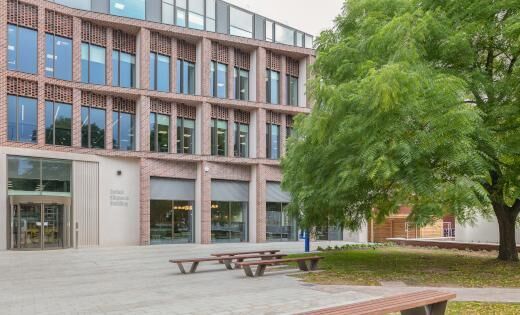Behaviour Lab

The Behaviour Lab inside the Esther Simpson Building is a state-of-the-art research facility dedicated to advancing research, teaching and knowledge exchange in human behaviour and analysis.
The space is designed to be inclusive and creates an environment that fosters interdisciplinary collaboration and learning with industry.
We want to work with researchers, educators, industry and funders to address the global challenges of today, through a better understanding of human behaviour.
Use of the Lab is supported with access to a technician and assistance with hardware and software. We also run introductory courses. To find out more please contact: LUBSBehaviourLab@leeds.ac.uk.
Our rooms and equipment
Lab 1
Lab 1 is flexible space that can seat up to 20 people in a boardroom style. This room is ideal for the observation of groups, or to create different testing environments. Virtual reality (VR) sensors also enable the use of VR equipment. The room can facilitate hybrid meetings. It has a large touch screen connected to a PC in a podium style. There are two video cameras, and a room-wide microphone to capture activity.
Lab 2
Lab 2 is a cubicle-style computer cluster with 20 individual workstations, allowing participants to work on individual tasks without being disturbed. Each PC is of a high technical specification and comes with headphones and a HD camera to enable eye tracking. The lab also features several peripherals, such as galvanic skin sensors. Like Lab 1, this room has a large touch screen connected to a PC in a podium style, two video cameras, and a room-wide microphone to capture activity.
Control/Observation Room
The control/observation room is situated between the two labs. From here researchers can see the activity occurring in both labs and a specialist PC records sound and video. The room is soundproofed and features a one-way window that views Lab 1. Two wall mounted screens enable up to 10 researchers to observe mirrored images of Labs 1 and 2, and 10 audio points enable observers to listen. Outward microphones allow communication with the labs from within the control room.
Software
Sound and video files are captured by the lab. This data can then be analysed in the specialist behavioural software programme Observer XT. This software allows researchers to code the frequency and duration of behaviours for export into your preferred statistical analysis package, such as SPSS, Python or R. Video and audio files can also be exported into other analysis packages like NVivo.
Experimental research designs are conducted using Gorilla Experiment builder. Gorilla is a cloud-based platform that enables researchers to create and host a variety of experimental designs. An overview of the platform's capability can be found here. These experiments can be hosted in the lab, or links can be sent to participants for remote testing. These experiments can be hosted in the lab, or links can be sent to participants for remote testing.
Eyetracking
The lab employs two types of eye tracking technology. In Lab 2, HD webcams are installed on each computer and can be used alongside Gorilla Experiment Builder to monitor participants' eye movements during testing.
Additionally, the lab is equipped with a Tobii Pro Fusion unit.
Virtual Reality (VR)
Both labs are equipped with VIVE Pro2 full kits.
Lab 2 is ideal for seated or low-mobility activities, while Lab 1 offers participants freedom of movement.
Physiological Data
The lab is equipped with a mobile MindWare unit capable of capturing ECG and galvanic skin responses. This advanced technology enables researchers to record autonomic responses of the nervous system.
Contact us



